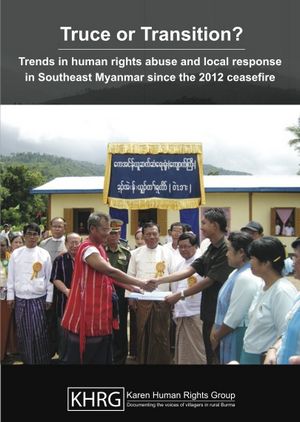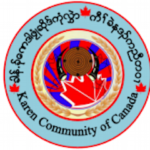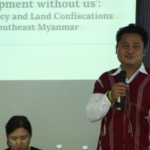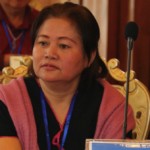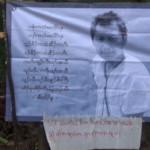Report by KHRG (Karen Human Rights Group) | Published on May 13, 2014
Truce or Transition? Trends in human rights abuse and local response in Southeast Myanmar since the 2012 ceasefire
Human rights conditions have been transformed on the ground in rural Southeast Myanmar since the signing of a preliminary ceasefire agreement between the Myanmar government and the Karen National Union in January 2012. While some forms of human rights abuse documented by KHRG since 1992 remain of serious concern, others have almost disappeared. At the same time, new forms of abuse and local concerns are emerging in the evolving security environment.
In this new context, there is speculation at the local level over whether the January 2012 agreement marks only a temporary truce, or a viable transition to peace and stability for local communities.
Drawing on a dataset of 388 oral testimonies and pieces of documentation from a total of 1,404 collected over the past two years by villagers trained to monitor human rights conditions in their own communities, this report presents analysis of 16 categories of human rights abuse or related issues. This analysis places recent testimony in the context of 20 years of abusive practices, quantifies occurrence across KHRG’s seven research areas and identifies common perpetrators of abuse or related actors. Since the ceasefire, changes in the prevalence of human rights abuse and local responses to such abuse have not been systematically documented.
Local perceptions of threats to the ceasefire process remain similarly unknown. This report therefore aims to provide an update from the ground in rural Karen areas of Southeast Myanmar that will allow local, national and international actors to base programming and policy decisions related to this post-conflict region more closely around the experiences of local people, and better support villagers by understanding their concerns and priorities.
“The situation is getting better. The leaders are trying to build relationships with each other. There is a change. Villagers can travel freely. Before the ceasefire,
[Tatmadaw soldiers] were coming and going from the village, and the villagers were afraid. They did not dare to travel. For now, we can travel freely.”Saw S— (male, 46), Toungoo District, April 2012
“[Some] villagers believe that the ceasefire is not a stable process for them because the Burmese army is rebuilding their camps and sending more rations during the ceasefire. The villagers are not satisfied. They always have to worry and also have to deal with land confiscation and extortion by the Burmese army after the ceasefire. Instead of removing their camps, the army has returned and rebuilt their camps in the mountains, close to the working areas of the villagers, who do not show themselves to the army.”
Situation Update written by a KHRG researcher, Hpapun District, January 2013
Read more by clicking the links below.
Download briefer (PDF) in English | in Burmese
Download full report (PDF) from KHRG website in English | in Burmese
You may also like:

